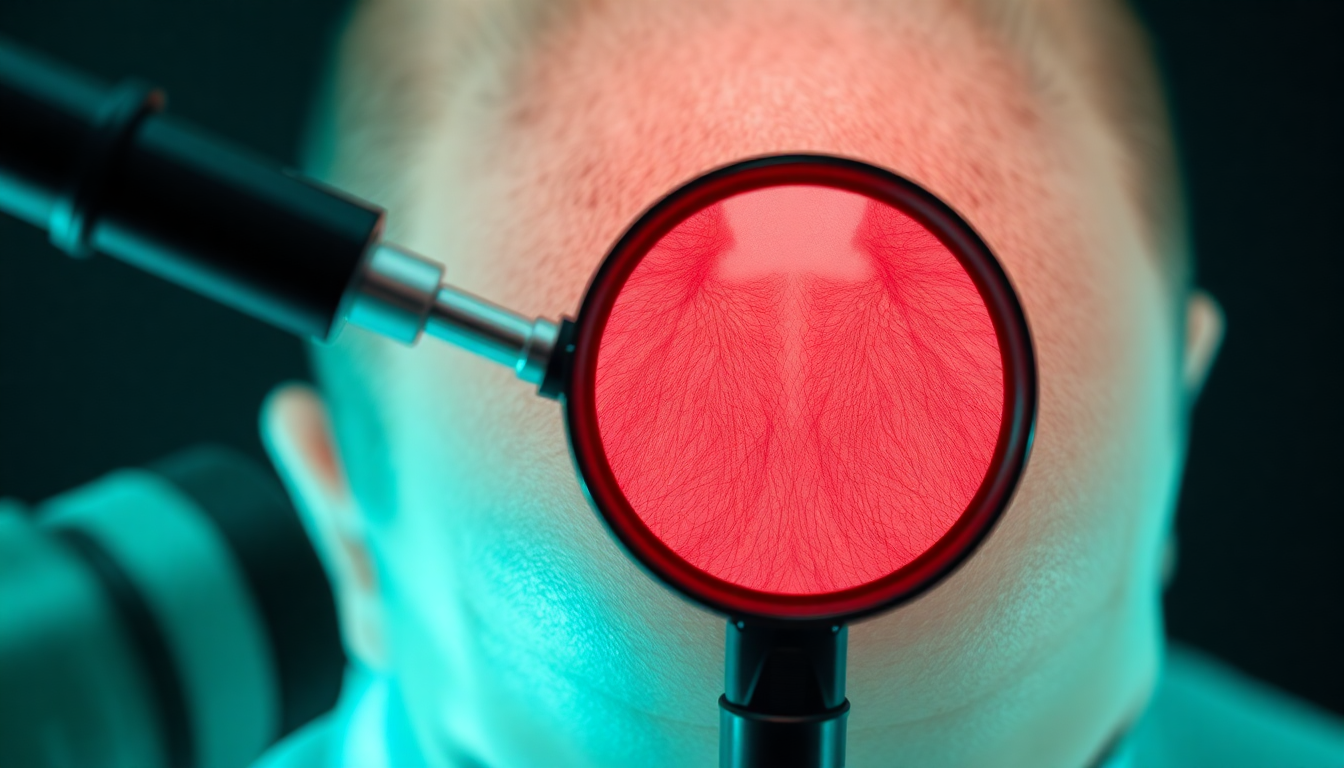Introduction
In the rapidly evolving world of hair health, understanding and monitoring hair density has become more accessible and essential than ever before. Whether you're concerned about hair thinning, looking to evaluate the effectiveness of hair growth products, or simply want to keep an eye on your scalp health, accurate measurement tools are crucial. The year 2025 brings a plethora of innovative at-home scalp imaging techniques that allow users to quantitatively track changes in hair density with precision. In this comprehensive guide, we delve into the most effective methods, equipment, and best practices for monitoring your scalp at home, empowering you to take control of your hair journey.
Why Quantitative Scalp Imaging Is a Game Changer
Traditional visual assessments of hair health can be subjective and inconsistent. Relying solely on appearance can lead to misconceptions and delayed responses to issues like hair loss or poor hair density. Quantitative scalp imaging addresses these limitations by providing measurable data, enabling precise tracking over time. Benefits include:
- Objective measurement of hair density and scalp condition
- Ability to evaluate the effectiveness of treatments or products
- Early detection of hair thinning or scalp problems
- Increased motivation through clear progress visualization
Advances in At-Home Scalp Imaging Technologies in 2025
Modern technology has democratized scalp imaging, making sophisticated tools affordable and easy to use at home. The most prominent techniques include smartphone-based imaging, specialized devices, and innovative software solutions.
1. Smartphone Applications with AI and High-Resolution Cameras
Smartphone apps are now equipped with artificial intelligence and advanced image processing algorithms that analyze scalp images for fullness, hair count, and follicle health. To optimize results:
- Use a smartphone with at least a 12-megapixel camera
- Ensure adequate, even lighting to reduce shadows and glare
- Maintain consistent angles and distances during each shot
- Capture multiple images for averaging data accuracy

Popular apps such as HairCheck and HairMax have integrated features that help track hair density changes over weeks and months, presenting data visually to help interpret progress effectively.
2. Specialized Portable Scalp Cameras and Dermatoscopes
Highly magnified, portable devices—known as dermatoscopes or scalp cameras—are equipped with LED lighting, polarized filters, and high-resolution sensors to provide detailed views of scalp health. These tools attach to smartphones or operate independently, revealing follicle details, scalp inflammation, or other issues invisible to the naked eye.

Top brands like DermLite and Foldio offer models specifically designed for scalp imaging, allowing you to document changes accurately over time. Proper use includes maintaining consistent distance, lighting, and angle to ensure comparability of images.
3. Standardized Photography and Recording Practices
Consistency is key for reliable measurements. Follow these best practices:
- Designate a specific spot in your home with optimal, steady lighting
- Use a tripod or stabilize your camera to avoid blurriness
- Take photos at fixed intervals, such as weekly or biweekly
- Record your imaging setup details (lighting conditions, camera settings, time of day)
- Ensure the scalp area is clearly visible by parting hair neatly
Interpreting Quantitative Data Effectively
Once you have captured images or scans, the next step is analyzing the data. Most modern apps and devices provide metrics such as:
- Hair count per square centimeter
- Hair coverage percentage
- Follicle health indicators
- Scalp inflammation levels
Plotting these metrics over time reveals trends, helping you identify patterns or assess treatment efficacy. Many software solutions also generate visual graphs to facilitate understanding and motivation.
Enhancing Your Home Hair Monitoring Routine
Consistency and supplementary practices amplify the benefits of scalp imaging:
- Maintain a regular schedule: weekly or biweekly imaging ensures timely data collection.
- Combine with scalp health assessments: look out for signs like itchiness, flakiness, or redness.
- Support with high-quality hair care products: use trusted brands like Eelhoe-Cosmetics to nurture scalp health.
- Consult professionals when needed: share your data with trichologists or dermatologists for personalized advice.
For maximum impact, consider integrating imaging results with other scalp health routines, such as proper cleansing, scalp massages, and nutrition.
Choosing the Right Products to Support Hair Density
Products that promote scalp health can significantly influence your imaging results. Some key categories include:
- Hair Growth Serums: designed to stimulate follicles
- Scalp Moisturizers: to reduce inflammation and improve follicle environment
- Vitamins and Supplements: supporting overall hair health
- Shampoos and Conditioners: formulated to cleanse without stripping essential oils
Explore trusted brands like Eelhoe for products tailored to reinforce scalp integrity and hair density.
In-Depth Product Recommendations
- Eelhoe Hair Growth Serum: Contains active ingredients proven to stimulate follicles and enhance density.
- Eelhoe Scalp Nourishing Mask: Hydrates and maintains scalp health, creating an optimal environment for hair growth.
- Eelhoe Vital Vitamins: Oral supplements formulated to support hair vitality from within.
All products are available through Eelhoe's official site. Incorporating these into your routine can provide supportive benefits alongside your imaging-focused practices.
Conclusion
By adopting cutting-edge at-home scalp imaging techniques in 2025, you can transform your approach to hair health from guesswork to data-driven precision. Whether utilizing smartphone apps, specialized devices, or consistent photography, each method offers insights into your hair density and scalp condition. Combine these techniques with quality hair care products, such as those from Eelhoe, for optimal results. Remember, a proactive and informed approach can make a significant difference in achieving and maintaining healthy, dense hair. Invest in your hair health today, monitor your progress regularly, and unlock the confidence that comes with knowing your hair is thriving!




Leave a comment
All comments are moderated before being published.
This site is protected by hCaptcha and the hCaptcha Privacy Policy and Terms of Service apply.